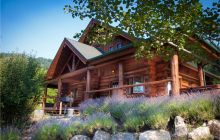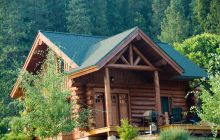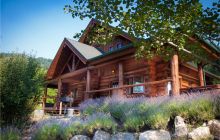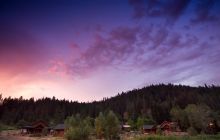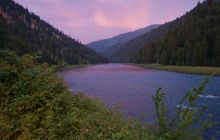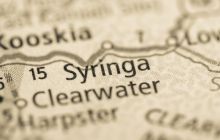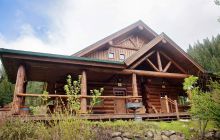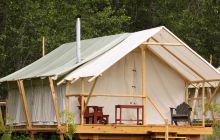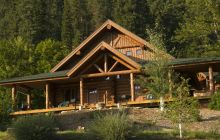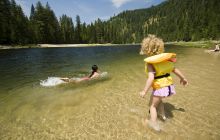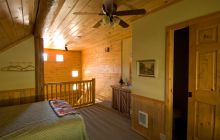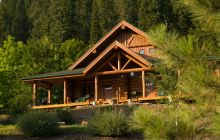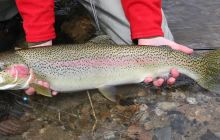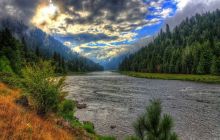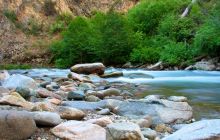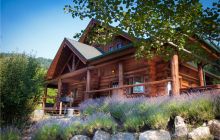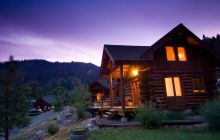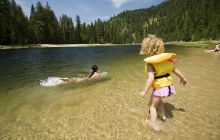Submitted by Editor on
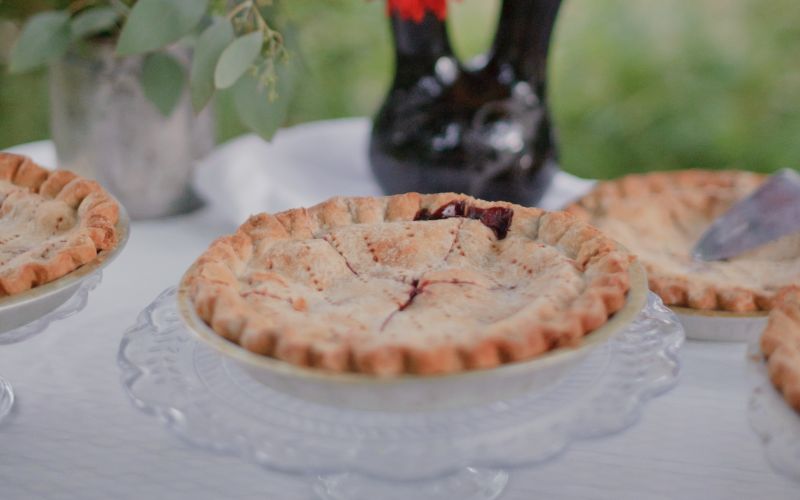
The Wild Huckleberry
In the Rocky Mountain West, huckleberries hold a special place on the alter of culinary delicacies. They grow only in the wild and are coveted by many. People have secret places they hike to each year for the harvest, and just like fishermen who won’t tell you their favorite hole, people are tight-lipped about any specific locations.
Huckleberries are delicious fresh off the plant, but also freeze and store well. Since the harvest lasts only a month each year people freeze huckleberries for year-long use. Huckleberry pies and milkshakes are two of the most popular forms of enjoyment, but they are also a scrumptious topping on salmon (another icon of Pacific Northwest cuisine) and are made into jams and syrups.
People are not the only ones who love huckleberries. Bears and birds also enjoy these bursting-with-flavor mountain berries. If you hike in the Rockies, you might come across a mound of dry leaves neatly molded or stacked. This would be the excrement of a large bear, as bears don’t take the time to separate leaves from berries as they feast. Huckleberries are not ripe until late July and into August, so the bears eat them in a hurry as they put on fat for a long winter of hibernation.
While many have tried, none have yet succeeded in domesticating the wild huckleberry of the Rocky Mountains and certainly no industrial production of this plant. Many people agree that anything cultivated is considered a blueberry. Interestingly, there are some 12 species of huckleberries in the genus Vaccinium and in northern Idaho and western Montana, “black,””tall,” or “thinleaf,” huckleberry (V. membranaceum) is the berry that harvesters hunt and is the main source for the wild huckleberry industry. Pickers can make reasonable money for the few weeks of harvest, selling to specialty jam and syrup makers, local farmer’s markets and places like the Syringa Café at River Dance Lodge where we use huckleberries for our legendary pies.
Huckleberries love forest fires and grow abundantly on burned lands. Indigenous Peoples would start fires after the harvest in the moister autumn months, to slowly burn underbrush and create ideal berry patch conditions. Pickers will head to areas known to have burned in the past few years. The leaves and foliage of thinleaf huckleberry is of low flammability which aids the plant in surviving low intensity fires. Since it reproduces primarily through underground rhizomes, even a scorched plant will regenerate.
- Fun Fact: Huckleberries were one of the few plant species to survive on Mount St. Helens following the large eruption in 1980, and today are prominent on the slopes of the mountain where they are enjoyed by the local population and wildlife.
For those that live in the Rocky Mountains and Pacific Northwest, the huckleberry is a real treat. For some families annual outings to camp and pick are time-honored traditions. If you haven’t tasted a huckleberry, don’t wait too much longer! They are truly one of life’s delicacies.
P.S. We’d love to share our huckleberry pie recipe, except we won’t because it’s a secret! Instead please enjoy this blackberry pie recipe, a culinary delicacy that we often serve up at the lodge when the blackberries ripen in late July.
Blackberry Pie Recipe:
Pie Crust:
Double your favorite crust recipe or purchase 2 rolled pie crusts
Filling:
- 6 Cups blackberries (fresh or thawed if using frozen berries)
- 1- 1½ Cup sugar (adjust this based on the tartness of your berries, use the full 1 ½ cups if your berries are more on the tart side)
- ¼ Cup cornstarch
- ¼ tsp salt
- 2 Tbsp lemon juice
- 3 Tbsp chilled butter
- 1 Tbsp beaten egg mixed with 1 Tbsp of water
Instructions:
- Preheat oven to 350
- Roll out half of your pie crust and press it into the bottom of a 9” pie plate. Make sure that you have full coverage all the way up to the lip of the plate or pan.
- In a large bowl mix the berries, sugar, cornstarch, salt and lemon juice together. Be sure not to overmix the filling, you can use more of a folding action to help incorporate everything.
- Roll out the second half of your pie crust and either cover the entire pie or cut into strips for a lattice crust. For lattice crusts, weave the strips in a lattice pattern until the top of the pie is covered. For full coverage crusts, place the crust over the pie and trim the edges. You can then fold, pinch, or use a tool such as a fork to ensure the crusts are sealed together. If you choose a full coverage top cut vent holes into it with a sharp knife.
- Brush a light layer of the egg and water mixture over the crust with a pastry brush or spoon.
- Cut the butter into small cubes and tuck into the pie through the gaps in the lattice top or through the vent holes. (If doing a full coverage crust it’s helpful to place the butter cubes onto pie prior to placing the top crust on)
- Sprinkle top of pie with 2 tsps of white granulated sugar
- Place the pie in the preheated over and bake for 50-55 minutes or until crust is golden brown and filling is hot and bubbly. To keep your crust from burning you can cover the pie with foil either at the beginning of cooking for 10-15 minutes, or as soon as you notice the crust has reached a desired golden brown color.
Don’t forget to put a drip pan under your pie! Blackberry pies are notorious for bubbling over and dripping on the bottom of your oven.
As a simple adaptation to this recipe you can use frozen berries and pre-made pie crust, but we think it makes all the difference to create this delicious treat from scratch with fresh berries!

